How Earth got its moon
The standard tale of our moon’s formation may need a rewrite
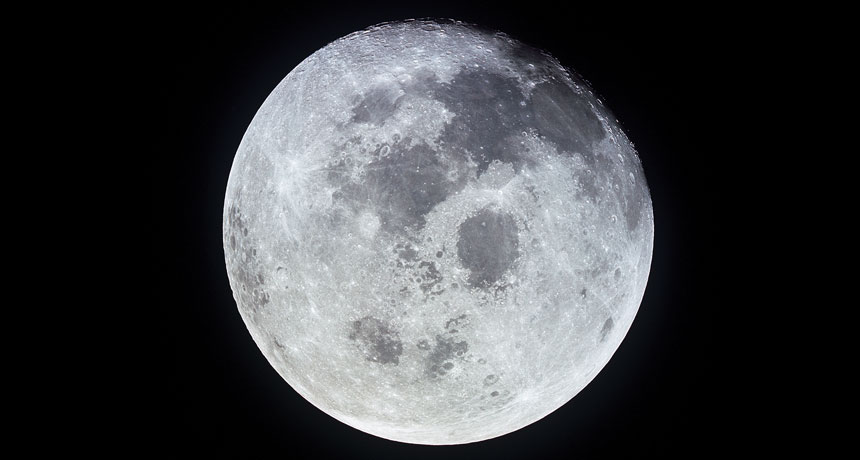
Scientists think that the moon was created in an ancient space collision. Or maybe many little collisions. The debate is not yet settled.
NASA
The story of our moon’s origin does not add up. Most scientists think that that the moon formed in the earliest days of our solar system. That would have been back around 4.5 billion years ago. At that time, some scientists suspect, a Mars-sized rocky object — what they call a protoplanet — smacked into the young Earth. This collision would have sent debris from both worlds hurling into orbit. Some of the rubble eventually would have stuck together, creating our moon.
Or maybe not.
Astronomers refer to that protoplanet as Theia (THAY-ah). Named for the Greek goddess of sight, no one knows if this big rock ever existed — because if it did, it would have died in that violent collision with Earth.
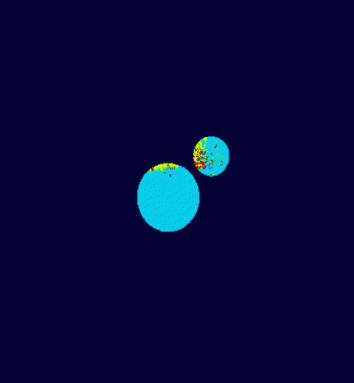
And here’s why some astronomers have come to doubt Theia was real: If it smashed into Earth and helped form the moon, then the moon should look like a hybrid of Earth and Theia. Yet studies of lunar rocks show that the chemical composition of Earth and its moon are exactly the same. So that planet-on-planet impact story appears to have some holes in it.
That has prompted some researchers to look for other moon-forming scenarios. One proposal: A string of impacts created mini moons largely from Earth material. Over time, they might have merged to form one big moon.
“Multiple impacts just make more sense,” says Raluca Rufu. She’s a planetary scientist at the Weizmann Institute of Science in Rehovot, Israel. “You don’t need this one special impactor to form the moon.”
But Theia shouldn’t be left on the cutting room floor — at least not yet. Earth and Theia could have been built largely from the same type of material, new research suggests. Then they would have had a similar chemical recipe. There is no sign of “other” material on the moon, this explanation argues, because nothing about Theia was different.
“I’m absolutely on the fence between these two opposing ideas,” says Edward Young. He studies cosmochemistry — the chemistry of the universe — at the University of California, Los Angeles. Determining which story is correct is going to take more research. But the answer could offer profound insights into the evolution of the early solar system, Young says.
Mother of the moon
Earth’s moon is an oddball. Most other moons in our solar system live way out among the gas giants, such as Saturn and Jupiter. The only other terrestrial planet with orbiting moons is Mars. Its moons, Phobos and Deimos, are small. The leading explanation for them is that likely were once asteroids. At some point, they were captured by the Red Planet’s gravity. Earth’s moon is too big for that scenario. If the moon had come in from elsewhere, it probably would have crashed into Earth or escaped and fled into space.
An alternate explanation dates from the 1800s. It suggests that moon-forming material flew off of a fast-spinning young Earth. (Imagine children tossed from an out-of-control merry-go-round.) That idea fell out of favor, though, when scientists calculated the spin speeds required. They were impossibly fast.
In the mid-1970s, planetary scientists proposed the giant-impact hypothesis. (Later, in 2000, they named that mysterious planet-sized body as Theia.) The notion of a big rocky collision made sense. After all, the early solar system was like a game of cosmic billiards. Giant space-rock smash-ups were common.
But a 2001 study of rocks collected during NASA’s Apollo missions to the moon cast doubt on the giant-impact hypothesis. Research showed that Earth and its moon were surprisingly alike. To figure out a rock’s origin, scientists measure the relative abundance of different forms of oxygen. Called isotopes (EYE-so-toaps), they are forms of an element with different masses. (The reason they differ: Although each has the same number of protons in its nuclei, they have different numbers of neutrons.)
Story continues below graph.
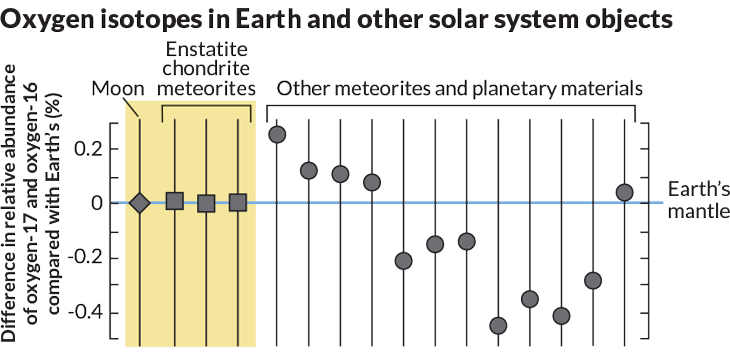
Scientists can use amounts of various isotopes as something like fingerprints at a crime scene. Rocks from Earth and its moon, the scientists found, had seemingly identical mixes of oxygen isotopes. That didn’t make sense if much of the moon’s material came from Theia, not Earth. Rufu and her colleagues modeled the impact on a computer. From that they calculated the chance of a Theia collision yielding a moon with an Earthlike composition. And it was very slim.
Studies have been done of other elements in moon rocks, such as titanium and zirconium. They, too, suggest that Earth and its moon originated from the same material. Young at UCLA and his colleagues recently repeated the oxygen isotope measurements. They used the latest techniques. They were hunting for even the slightest difference between Earth and the moon.
In January 2016, the team published its results in Science. “We measured the oxygen to the highest precision available,” Young says. “And, gosh, the Earth and moon still look identical.”
It’s time to think outside the Theia-smashup box, some scientists now argue. Not one but many impacts likely built up our moon. Rufu and her colleagues proposed this in the February Nature Geoscience. The moon, they say, has an Earthlike composition because most of the material flung into orbit during all of those impacts came from Earth.
Mini-moon merger
Scientists first put the multi-impact idea forward in 1989. But back then, they didn’t have the computer power to run the simulations to test it. Computer models are finally up to the task. Rufu’s team recently worked on one such model to investigate the idea of multiple smashups in Earth’s early history. Each incoming body had about a hundredth to a tenth of Earth’s mass.
Any direct hits would have transferred lots of energy to our planet. Those would have excavated Earthy material, flinging it into space. Debris from each impact would have combined over the centuries to form a small moon, the modeling shows. As more impacts rocked Earth over tens of millions of years, more mini moons would have formed. Eventually, gravity would have pulled them together. Over roughly 100 million years, according to this scenario, roughly 20 mini moons could have merged to form one mighty moon.
In the computer modeling study, a multi-moon explanation yields the right lunar mix in about one in every five tests. That’s better than the 1 or 2 in a hundred likelihood for the giant-impact hypothesis, the researchers note. “The biggest takeaway is that you cannot explain everything with one shot,” Rufu says.
Planetary scientist Robin Canup finds her logic convincing. Canup works at the Southwest Research Institute in Boulder, Colo. “To me, this appears to be a real contender alongside the one big-impactor hypothesis,” she says.
Story continues below image.
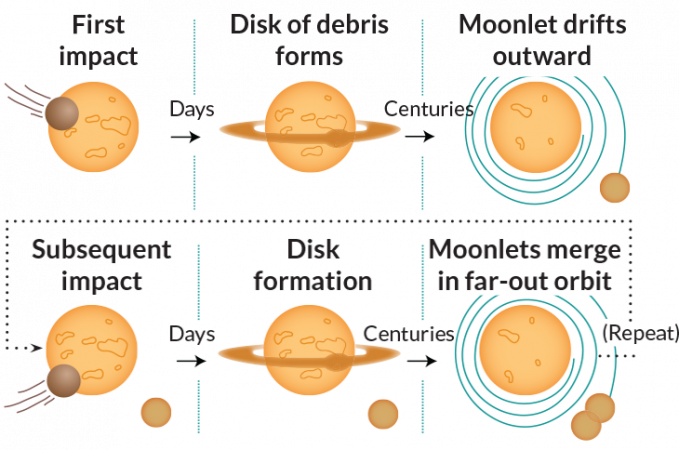
Don’t discount Theia
But the Theia hypothesis is far from dead. The odds of Theia resembling Earth’s composition enough to yield an Earthlike moon may be a lot higher than originally thought. That is the conclusion of some new chemical analyses. Most of the material that makes up Earth came from the same source as a certain type of meteorite. These are called enstatite chondrites (En-STAT-tyte KON-drytes).
Like oxygen, the isotopic mix of other elements in Earth’s rocks serves as a fingerprint of their source. Some elements are iron-lovers, such as ruthenium (Ru-THEE-nee-um). In the semi-solid rock below Earth’s surface, these elements quickly sink toward Earth’s iron-rich core. Any ruthenium found near to Earth’s surface, in its mantle, probably arrived late in Earth’s development. Elements that aren’t so iron loving, such as calcium and titanium, wouldn’t sink to the core. They would stay in the mantle. Their isotopes would then record what went into Earth’s assembly over a much longer period of time.
Nicolas Dauphas is a planetary scientist at the University of Chicago in Illinois. He looked at both the elements that love iron and those that aren’t so fond of it. He then created a timeline of what types of space rocks would have needed to be added to Earth’s mass and when to create that mix.
A mix of different rocks supplied the first 60 percent of Earth’s mass, Dauphas concludes. And they included some resembling enstatite chondrite meteorites. The rest of the mix came almost exclusively from materials that led to those meteorites. In the end, Dauphas estimates, some three-quarters of Earth’s mass came from the same material as enstatite chondrites. He reported his analyses January 26 in Nature.
If Theia formed at around the same distance from the sun as Earth, it would therefore contain mostly the same material, he says. So if the moon formed largely from a Theia collision with Earth, it makes sense that moon rocks today would have a similar recipe to Earth.
“Most of the problem is solved, in my opinion,” says Marc Javoy. He’s a cosmochemist at the Institute of Earth Physics of Paris in France. All you have to do, he says, is “admit that the great impactor’s material was no different than that of the [early] Earth. It’s the simplest hypothesis.” It also would mean that the material gobbled up by budding planets in the inner solar system was fairly uniform in its chemical ingredients.
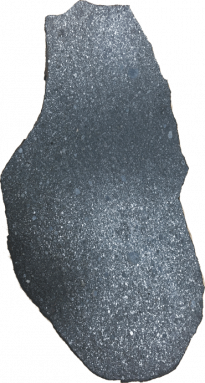
The notion that Earth is made from the same material as enstatite chondrites “doesn’t make many people happy,” says Richard Carlson. He’s a geochemist at the Carnegie Institution for Science in Washington, D.C. The isotopes in Earth’s mantle and the meteorites may match. However, the relative abundance of those elements do not. Carlson noted this in a commentary published January 26 in Nature. An additional step in the process is needed to explain this mismatch in the amount of those common ingredients, he says.
“What we have now are a lot of new ideas,” says Sarah Stewart. “Now we need to test them.” Stewart is a planetary scientist at the University of California, Davis.
One recently proposed test would be based on temperature. A new study compared the moon’s chemistry with glass forged by a nuclear blast. Its data suggest that temperatures during or just after the moon’s birth reached a sizzling 1400° Celsius (about 2600° Fahrenheit). That means any plausible moon-forming scenario must involve such high temperatures. Researchers reported this on February 8 in Science Advances.
High heat causes rocks to leach isotopes of zinc. The intense heat of the 1945 Trinity nuclear test in New Mexico forged a green-tinged glass. That glass lacks these isotopes of zinc, says James Day. He is a study coauthor and geologist at the Scripps Institution of Oceanography in La Jolla, Calif. The same goes for lunar rocks. Such high temperatures during or just after the moon’s formation fit with the giant-impact hypothesis, he says.
But wait: Rufu calculates that her multi-impact hypothesis also yields high enough temperatures. So maybe temperature can’t resolve the debate.
Probing the composition of the deep interiors of both Earth and its moon could prove the mini-moon explanation right, says Rufu. After all, she argues, without a single giant collision, the interiors of the two worlds may not have mixed well enough.
Dauphas says that measuring the compositions of other planets could support his proposal that Theia could have been similar in composition to Earth. Mercury and Venus also would have formed largely from the same kind of material as Earth. So they likely would also have Earthlike compositions, he says.
Future studies of other planets in the solar system could confirm or rule out these predictions. But that will require a new chapter of space exploration.







